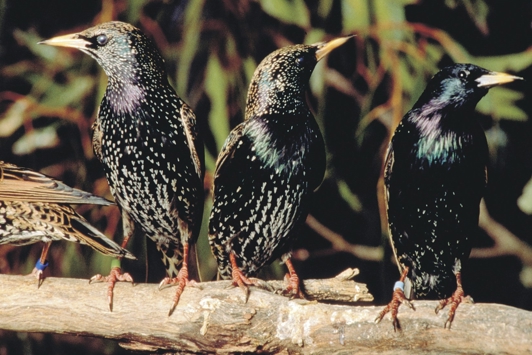The common starling is one of the most invasive bird pests worldwide, having established populations in many countries outside its natural range. It occurs naturally in Europe and Asia, and introduced populations occur throughout North America, South Africa, Argentina, Polynesia, New Zealand, and eastern Australia. Once introduced to a location, they can colonise surrounding areas, including offshore islands. In 1863, starlings from England were first released in eastern Australia, where they are now widespread.
The first starling recorded in Western Australia (WA) was in 1936 when a single bird was observed and removed at Gingin. Small populations of starlings were established in the south-east of WA, near the towns of Munglinup and Condingup between 2006 and 2009. These populations were successfully eradicated after a substantial control response was successful over the same time period. Starlings have also been recorded in other parts of the state, such as the Cadjebut mine in the Kimberley region.
Since 1971, the department has controlled starlings that come into WA from other states.
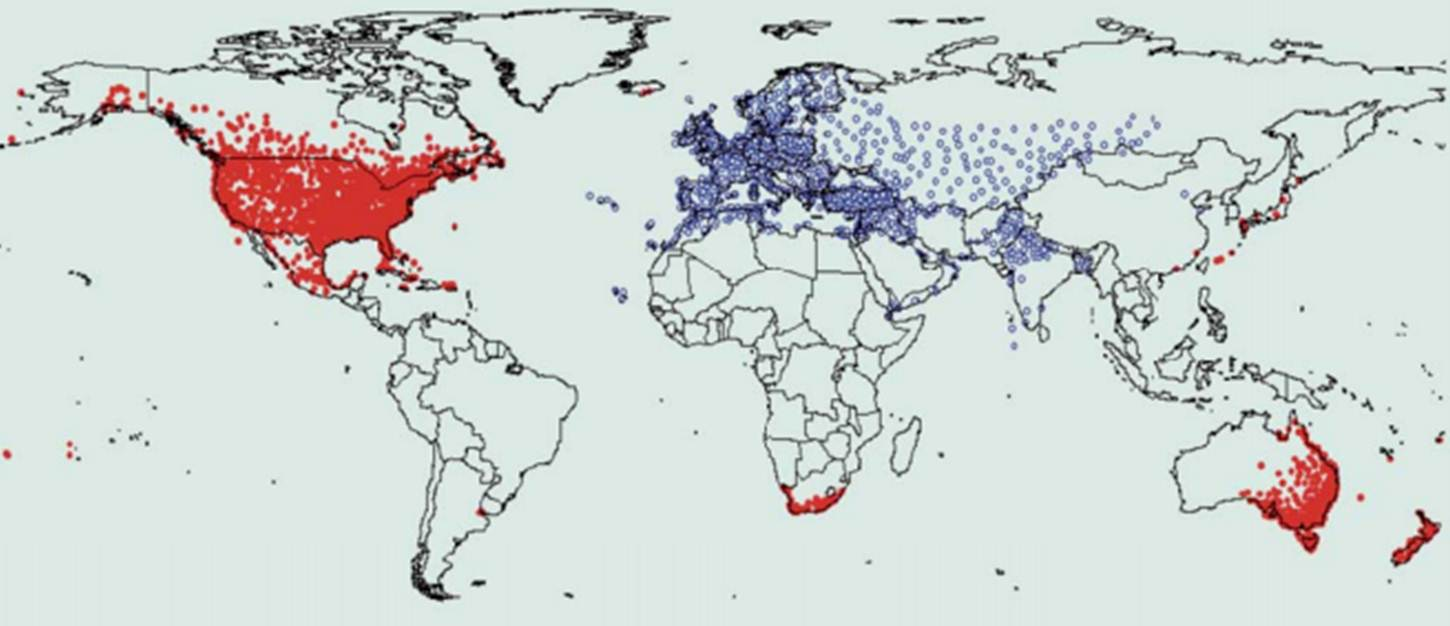
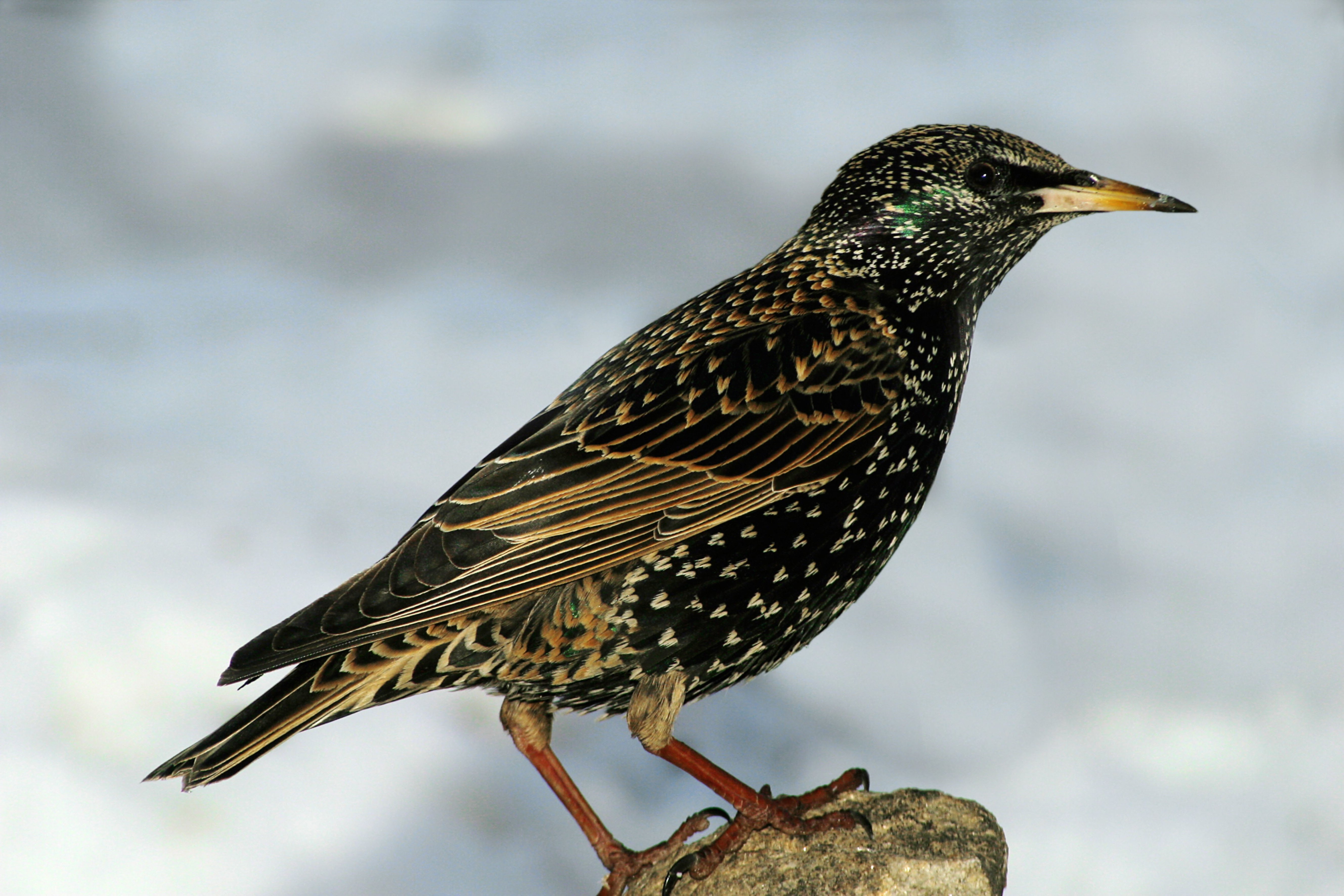
Report suspected common starlings
Be aware of any new or unusual birds, note the date, time, and location of the bird, Take photographs, if possible.
How to report your observations
Contact our Pest and Disease Information Service (PaDIS) by calling +61 8 9368 3080 or email padis@dpird.wa.gov.au.
Use MyPestGuide Reporter app or online tool or email mypestguide@dpird.wa.gov.au.
MyPestGuide Reporter appMore information
Under legislation administered by the department, the common starling is a declared pest in WA.
The Western Australian Organism List (WAOL), located on this website, contains information on the areas in which this pest is declared, and the control and keeping categories to which it has been assigned in Western Australia (WA). Use the links on this page to reach starlings in WAOL.
The starling is a significant economic pest overseas and in Australia, causing severe damage to high-value fruit crops, especially cherries, and all varieties of grape.
Starlings consume and spoil livestock feed, affecting intensive cattle, pig, and poultry production. They also disperse weeds by spreading viable seeds in their droppings and when they regurgitate food.
Starlings often live in close association with people and are the cause of considerable nuisance. The constant, high level of noise generated by large roosting flocks is disturbing to people living nearby. Garden trees, outdoor furniture, footpaths, and motor vehicles are damaged and soiled by the birds and their droppings.
Accumulated wastes of starlings are a disease risk as they provide a breeding ground for organisms that cause illness in humans.
Property, industry and infrastructure can be seriously damaged when starlings use manmade structures as roost and nest sites. Work areas become unsafe and unpleasant for people, and considerable cost is incurred to remove starling wastes.
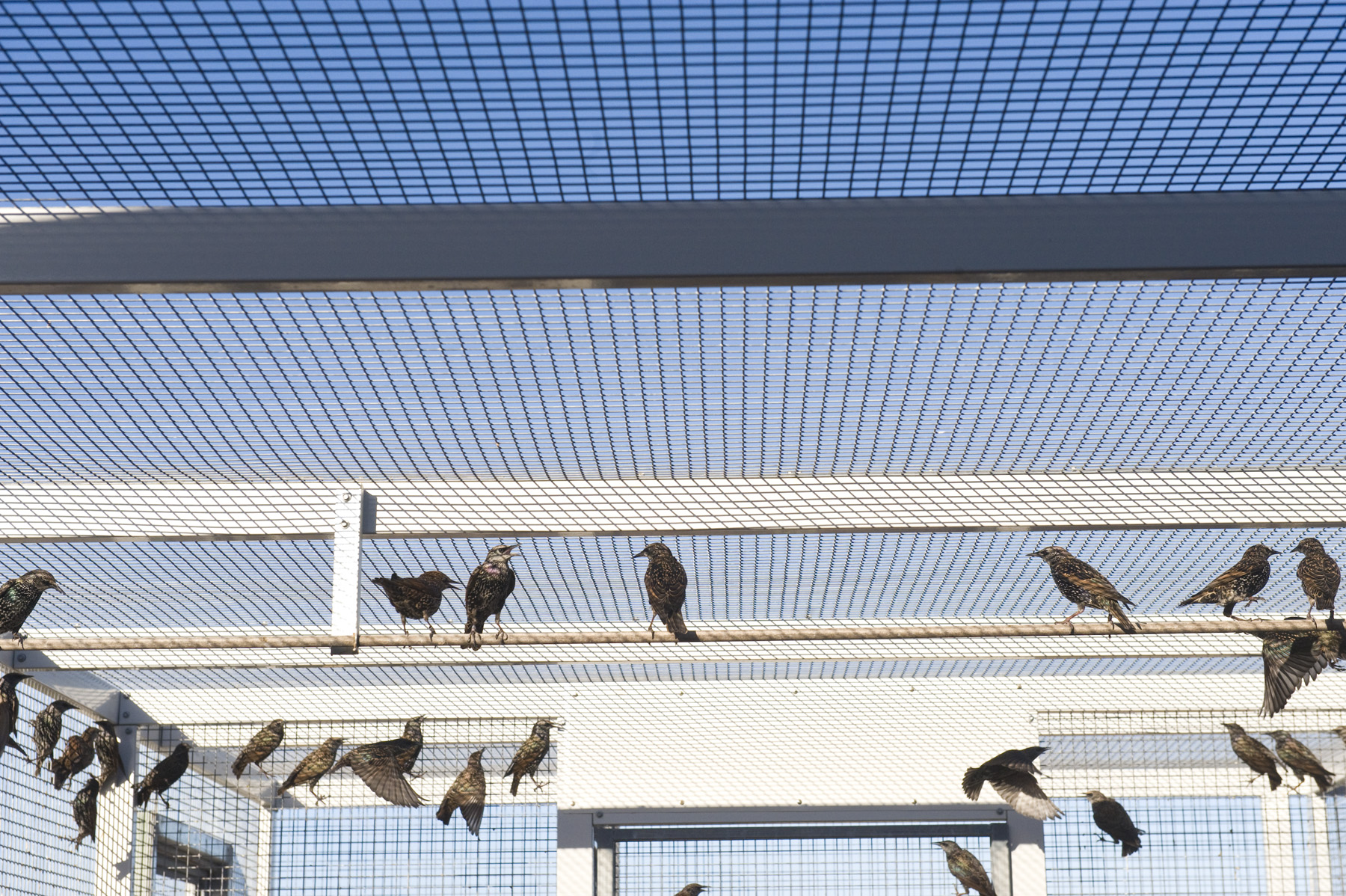
Starlings are small to medium-sized birds with males and females similar in appearance. They have distinctive glossy black feathers with an iridescent green and purple sheen. From a distance they can look plain black.
In autumn after moulting, the new feathers have pale tips, which give the birds a spotted appearance. However, by spring, these tips have worn, and the birds appear glossy black.
The beak is blackish in colour for most of the year, but yellow while the birds are breeding.
Young birds, which are seen in spring and summer, are a dull mouse-brown colour and when they moult to adult plumage in autumn, they have a patchy brown and black appearance, often with pale spotting.
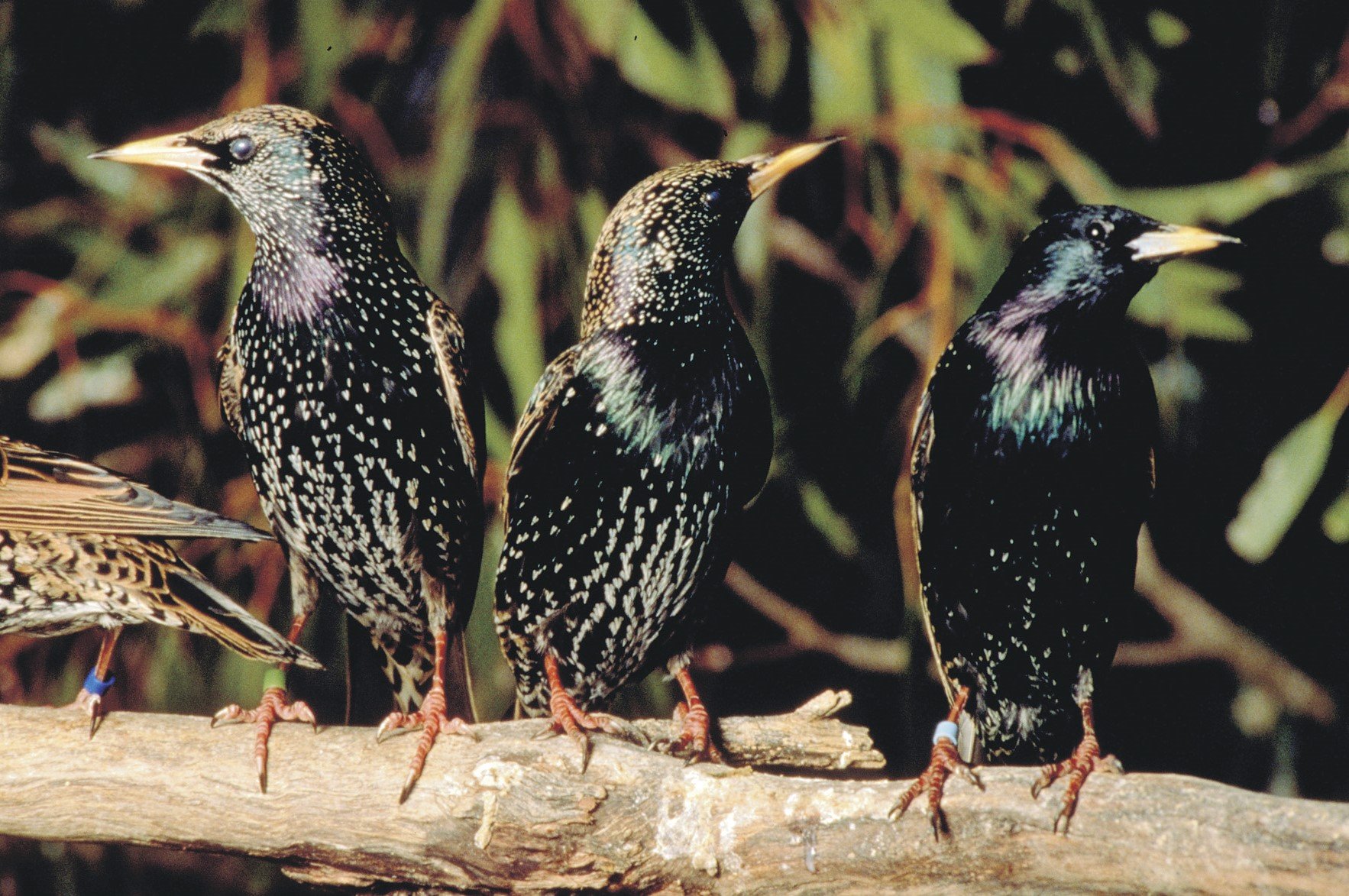
What their call sounds like
Hear what the starling sounds like, click the 'play' button below - note starts at 4 second mark.
Where they live
Common starlings are strongly associated with human-disturbed habitat, such as farmland and cultivated areas. However, they can also live in a wide range of rural and urban habitats, including open country or grasslands, wooded regions, swamps, parks, towns, and cities.
How they behave
Starlings are aggressive, social birds and can form very large flocks that move, feed, and roost together. On the ground, they walk jauntily or run rather than hop like many other birds.
They are often associated with livestock and can be seen perched on the backs of animals or on the ground among grazing stock. Starlings are proficient songbirds and can mimic the calls of many other birds.
What they eat
Starlings have a varied diet that includes insects, spiders, seeds, grains, fruit, livestock feed, and food waste. To breed successfully, they need to eat insects, but plant food is also readily consumed.
Starlings feed mainly on the ground where they pick up food items off the surface and probe into the soil with their strong beaks. They also pick food items off vegetation, catch flying insects, and pluck whole or pieces of fruit from trees and vines. Newly sown seed is uncovered and eaten from paddocks. Starlings prefer short grass when foraging, and grazed pastures provide ideal feeding sites.
Reproduction
Starlings can breed across a wide range of habitats. In Australia, they breed from July to March, and can have up to 3 broods per year. Nests are built in any available cavity, often in tree hollows or buildings. The nests are constructed of dry grass combined with assorted other material, including twigs, leaves, and feathers. Four to 5 light-blue eggs are laid, which hatch after 13 days. The young remain in the nest until 3 weeks of age.
The department runs a seasonal surveillance and trapping program in the south-east of the state to prevent the encroachment of starlings from South Australia, where this introduced pest bird is established.
The department’s surveillance and control work aim to prevent starlings from establishing permanent populations in WA and to eradicate incursions when located. We also work with South Coast NRM and Esperance Bird Observers Group volunteers to assist with surveillance efforts.
We work closely with the community and rural landholders on starling control, encouraging community members to be vigilant and report any usual activity, such as birds on the back of livestock or groups of black birds flying in tight groups.
Other than willy wagtails, starlings are one of the few birds that will stand on the back of livestock in Australia.
In the past, small populations of starlings have established in the south-east of WA, near the towns of Munglinup and Condingup.

Starlings represent an extreme risk to the economy, environment, and community of WA. A scientific risk assessment conducted by the department confirmed starlings have extreme potential for widespread establishment in WA and to become a significant pest here. An analysis of the economic impact of starlings to WA showed that it was cost-effective to prevent their widespread establishment.
The starling has the potential to impact on the biodiversity of WA by competing for tree hollows with native birds such as the western rosella. In eastern Australia, starlings have reduced the breeding success of native parrots and in North America they have had negative impacts on some native bird populations.
Although starlings are distinctive in appearance, they can be confused with similar-sized native species that use similar rural habitats.
Mistaken identity
The following is a guide to identifying common starlings, which summarises key features to look for to differentiate the starling and 3 similarly sized native species: dusky woodswallow, yellow-throated miner, and purple-crowned lorikeet.
Source
Handbook of Western Australian Birds – Volumes 1 and 2, Johnstone and Storr, 1998; 2004 Western Australian Museum.
Common starlings

Appearance
- Sized about 19 to 22 cm in length, and weighs between 38 and 80 g.
- Plumpish or stocky, dark-coloured bird with a short square tail and a straight, pointed bill.
Key features
- Dark, stocky looking bird, usually seen in groups and often around livestock.
- Flies fast with rapid wing movements, interspersed by short glides.
- Flocks often seen wheeling and turning quickly in tight silent groups, which makes them recognisable from a distance.
Dusky woodswallow
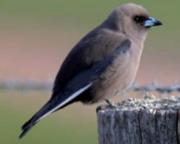
Photo - courtesy Kevin Vang© 2007
Appearance
- Sized about 17 to 19 cm in length, and weighs between 33 and 35 g.
- Compact bird with dark, grey-brown body.
- Chubbier looking than a starling with shorter legs and bill.
- Long tail.
Key features
- Has obvious white edging to wings and tail.
- The bill is short and blackish in colour.
- Flight is graceful but rapid, interspersed with periods of gliding.
- Has a soft chi chi in-flight call.
- Often seen in communal huddles or side by side along a tree branch.
Yellow-throated miner
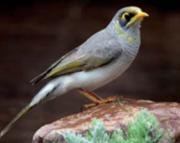
Photo - Tony Crittenden© 2007
Appearance
- Sized about 23 to 27 cm in length, and weighs between 53 and 61 g.
- Medium-sized honeyeater.
- Mostly pale, grey-brown body with white rump and underparts.
- Has short, rounded wings, and a longish tail.
Key features
- Noisy, gregarious, and aggressive to other birds.
- Frequently visits water troughs to drink and bathe.
- Has bright yellow skin above and behind eye, the bill is also yellow.
- In flight, they usually follow each other in a line and do not form tight flocks like starlings do.
- Loud, harsh alarm call, tew-tew-tew or teu-teu-teu.
Purple-crowned lorikeet
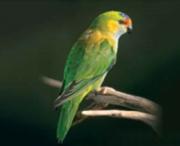
Photo - courtesy John Milbank© 2007
Appearance
- Sized about 16 to 18 cm in length and weighs about 42 to 50 g.
- Small green parrot (larger than a budgie) with largish head and pointed, stubby tail.
- Has a small purple patch on crown and orange on forehead and cheeks.
Key features
- Usually only seen when flying in small-to-large flocks, as not easily seen at close range.
- Flocks can resemble those of starlings in that these lorikeets fly and turn quickly in a tight group.
- Flight is swift and direct with rapid, whirring wing beats.
- Can be heard calling ‘zit’ or ‘tsit’ continuously when in flight (unlike starlings).
Hear what the starling sounds like
Click the 'play' button. Note that sound starts at the 4 second mark.
Documents
-
Starling biosecurity alertpdf (456 KB)

